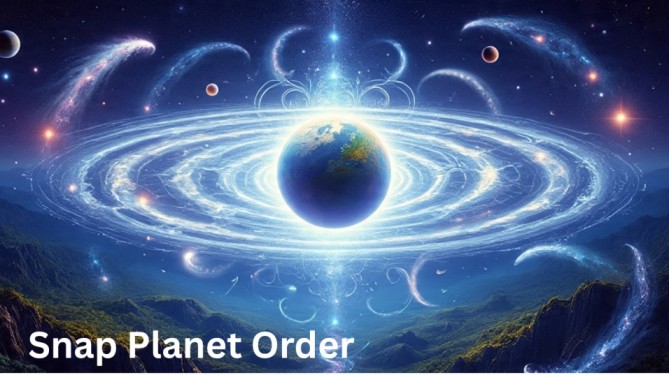Social media platforms have evolved into complex digital ecosystems where our interactions are subtly tracked, ranked, and interpreted. Snapchat, known for its ephemeral content and visual-first communication, has introduced a fascinating feature for its Snapchat Plus users: the Snap Planet Order.
This feature visualizes your position in someone’s friendship hierarchy using a solar system metaphor. If you’ve found yourself obsessing over whether you’re Mercury or Neptune in a friend’s orbit, you’re not alone. But what does this truly say about your relationship, and how should you interpret your position in the Snap Planet Order?
This article takes a deep dive into the logic behind the Snap Planet Order, explores what influences your planetary ranking, and analyzes what your position says about you beyond the surface level.
Understanding the Snap Planet Order
The Snap Planet Order is part of Snapchat’s premium Snapchat Plus subscription. This feature organizes your friends as planets around a central “Sun,” which represents the user. If you are someone’s top best friend on Snapchat, you appear as Mercury, the planet closest to the Sun. From there, your position moves outward to Venus, Earth, Mars, and so on, with Neptune being the eighth and farthest from the Sun.
Each planetary spot in the Snap Planet Order correlates with how often and how meaningfully you interact with that person on Snapchat. However, it’s important to note that this system only reflects data within the Snapchat app. It doesn’t consider your real-world friendship dynamics, nor does it measure the quality of your connection outside of digital interaction.
Key Factors That Influence Your Spot in the Snap Planet Order
Understanding what determines your place in someone’s Snap Planet Order requires digging into a few key behavioral factors:
1. Snap Frequency
The more often you snap a person, and the more often they snap you back, the closer you move toward the “Sun.” This regular communication is the most heavily weighted component of the Snap Planet Order algorithm.
2. Chat Volume
Chatting in the app especially in private conversations also has a strong influence. A consistent back-and-forth can elevate your position, especially if it’s daily or includes lengthy conversations.
3. Story Interactions
If you frequently view or engage with someone’s stories, it contributes to your rank. Similarly, if they interact with your stories, this helps raise your placement in their Snap Planet Order.
4. Engagement Recency
Recency matters more than longevity. If you haven’t interacted in a while, your rank may fall. This makes the Snap Planet Order a real-time reflection of current interaction trends rather than long-standing friendships.
5. Mutual Friend Data
Snapchat may consider your mutual friends or shared group chats to weigh your importance. Though this data is speculative, patterns suggest the algorithm accounts for your broader Snapchat social web.
What Each Planet Really Says About You
Your position in someone’s Snap Planet Order isn’t random, it’s algorithmically chosen based on behavior. Here’s what being each planet could say about your digital relationship:
Mercury (1st Position)
You are this person’s most interacted-with friend. You snap and chat regularly, possibly every day. Being Mercury means you’re a digital bestie and likely their go-to for sharing life updates.
Venus (2nd Position)
You’re a close second. Your conversations may be frequent but slightly less than Mercury. This could represent a friend you talk to often but with short breaks between chats.
Earth (3rd Position)
You still hold a strong place in their digital universe. You may be a longtime friend whose interactions are steady but not as frequent as others.
Mars (4th Position)
You’re drifting a bit. Perhaps a close friend who has started talking less, or someone in a niche group who used to be more active.
Jupiter to Neptune (5th to 8th Positions)
These positions often reflect friends with whom communication has declined. You’re still important enough to be in the planetary order, but other connections are currently more active.
Tradeoffs of Relying on Snap Planet Order for Social Meaning
While the Snap Planet Order is a clever and fun way to visualize relationships, it comes with inherent tradeoffs when used to judge the quality or depth of friendships.
| Benefit | Tradeoff |
| Encourages Engagement | May trigger anxiety or comparison |
| Offers Transparency | Can lead to misinterpretation of behavior |
| Makes Friendship Visual | Ignores non-digital aspects of relationships |
| Reflects Activity Trends | Favors quantity over quality of interaction |
Let’s say you’re someone’s Mars but expected to be Mercury. This might cause confusion or hurt feelings. However, the person may be prioritizing other platforms or communicating with you more in real life things that Snapchat simply cannot track.
The Psychology Behind Snap Planet Order Obsession
Humans are social beings, wired to understand hierarchies and group dynamics. The Snap Planet Order taps into this instinct by giving us a visible sign of where we stand with someone. This psychological mechanism known as social comparison theory can be empowering but also damaging.
Many users admit to checking their position in the Snap Planet Order daily, analyzing movements up or down. This can lead to:
- Validation-seeking behavior (“I made it to Venus!”)
- Anxiety or jealousy when demoted to outer planets
- Compulsion to increase interaction to improve rank
In essence, the Snap Planet Order gamifies relationships, which can either be motivating or emotionally exhausting depending on the user’s mindset.
Challenges of Interpreting the Snap Planet Order
1. One-Sided Visibility
You can only see your planet in someone else’s solar system if you’re also in their Best Friends list and have Snapchat Plus. If you’re not in their top 8, you’re invisible in the system which can feel like rejection, even though it’s simply how the algorithm works.
2. Context Blindness
The Snap Planet Order doesn’t explain why someone is Mercury or Mars it only shows that they are. It doesn’t account for vacations, mental health breaks, or people who just don’t use the app often.
3. App Usage Patterns
Not everyone uses Snapchat in the same way. Some people use it mainly for stories, others for chatting or group streaks. These differing behaviors can skew the algorithm’s results.
Real-Life vs. Digital Life: A Delicate Balance
It’s critical to remember that the Snap Planet Order only represents one channel of communication. It can never fully account for emotional closeness, shared history, or face-to-face interactions.
Example:
You might talk daily with a classmate on Snapchat, making you their Venus. But your best friend, who you see in person every day, might be Mars simply because you use Instagram to message them.
Over-relying on the Snap Planet Order to define friendship status can create unnecessary rifts or miscommunication. It’s a helpful tool but not a friendship truth serum.
How to Use the Snap Planet Order Constructively
Rather than viewing the Snap Planet Order as a scorecard, consider these healthier ways to engage with it:
Use it to Reflect
If you notice a friend moving further from the Sun, it could be a reminder to check in with them not because you’re competing, but because you care.
Understand the Dynamics
The ranking is dynamic. You may be Mercury today and Earth next week. Don’t let temporary shifts impact your self-worth or your perception of friendship.
Avoid Overinterpretation
The Snap Planet Order shouldn’t be used to judge others or test loyalty. Focus on conversations and mutual support over rankings.
When to Be Concerned (and When Not to Be)
Sometimes, users panic when their planet status drops suddenly. While there are cases where this reflects drifting apart, more often than not, it’s just a reflection of short-term interaction gaps.
You might not be Mercury anymore because:
- Your friend was on vacation and snapping someone else more
- You both stopped snapping and shifted to texting
- They’ve become more active in a group chat with others
These aren’t betrayals they’re part of the natural ebb and flow of communication.
A Look Into the Future of Snap Planet Order
As Snapchat continues to refine its Snapchat Plus features, the Snap Planet Order may evolve to include more analytics, notifications, or customizations. Future improvements could include:
- Interaction heatmaps
- Friendship summaries
- Planet streaks
- Group Planet Orders
But with greater detail comes greater emotional baggage. If users start treating planetary status as social currency, the app may need to implement educational tools to promote healthy usage.
Final Thoughts
The Snap Planet Order is a compelling feature that merges friendship, data, and design. Your spot in the Snap Planet Order says a lot about how you engage digitally with someone but only within the bounds of Snapchat. It does not measure sincerity, longevity, or emotional support.
Understanding your place in someone’s Snap solar system can be insightful, but it should be a fun lens not a defining label.



